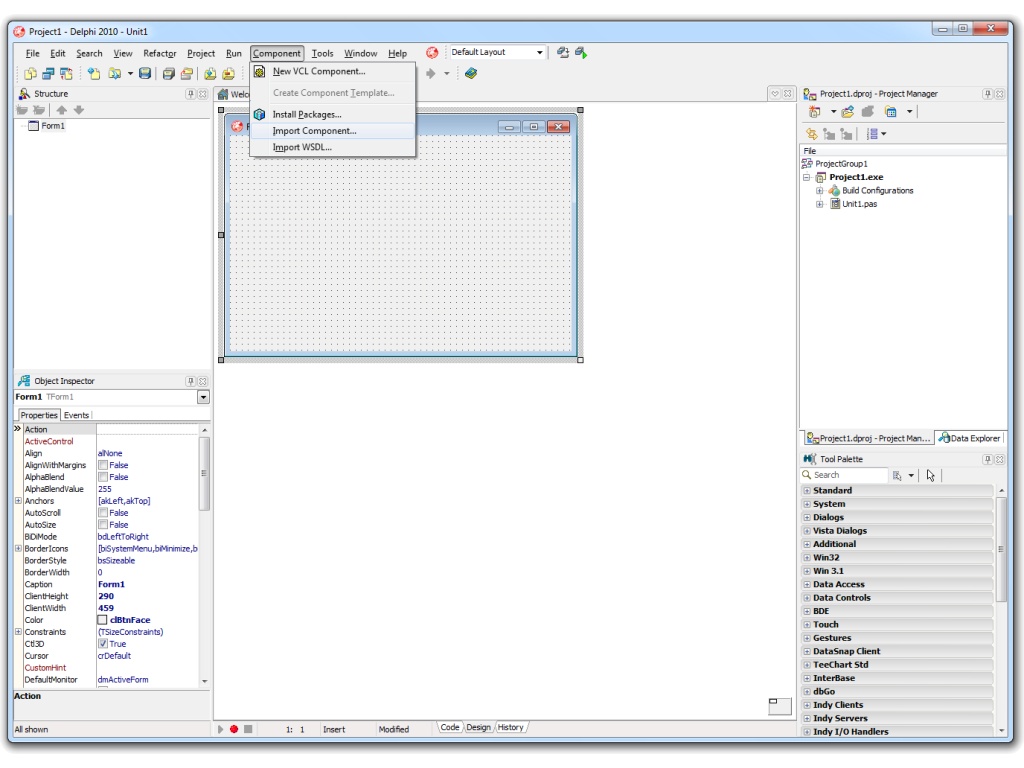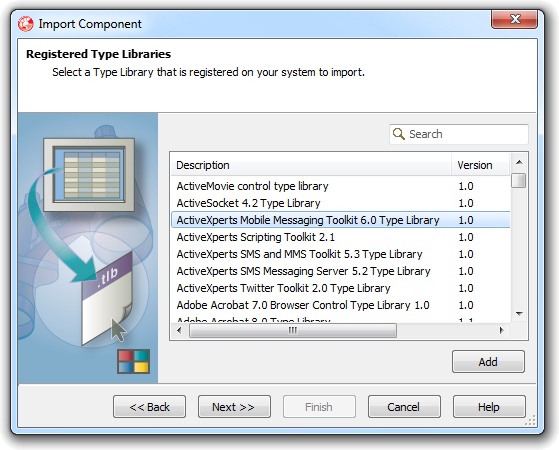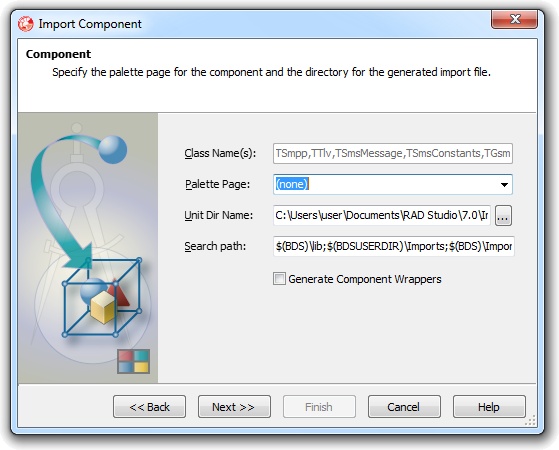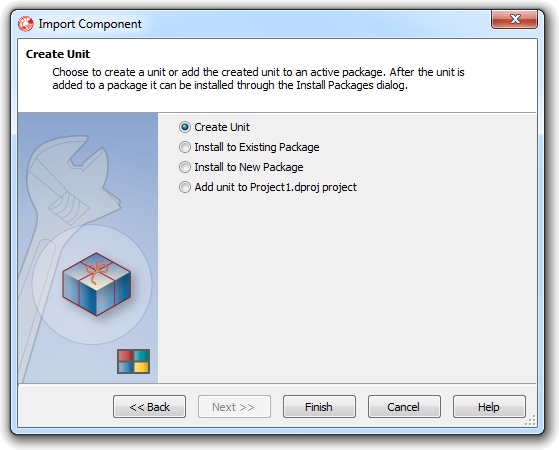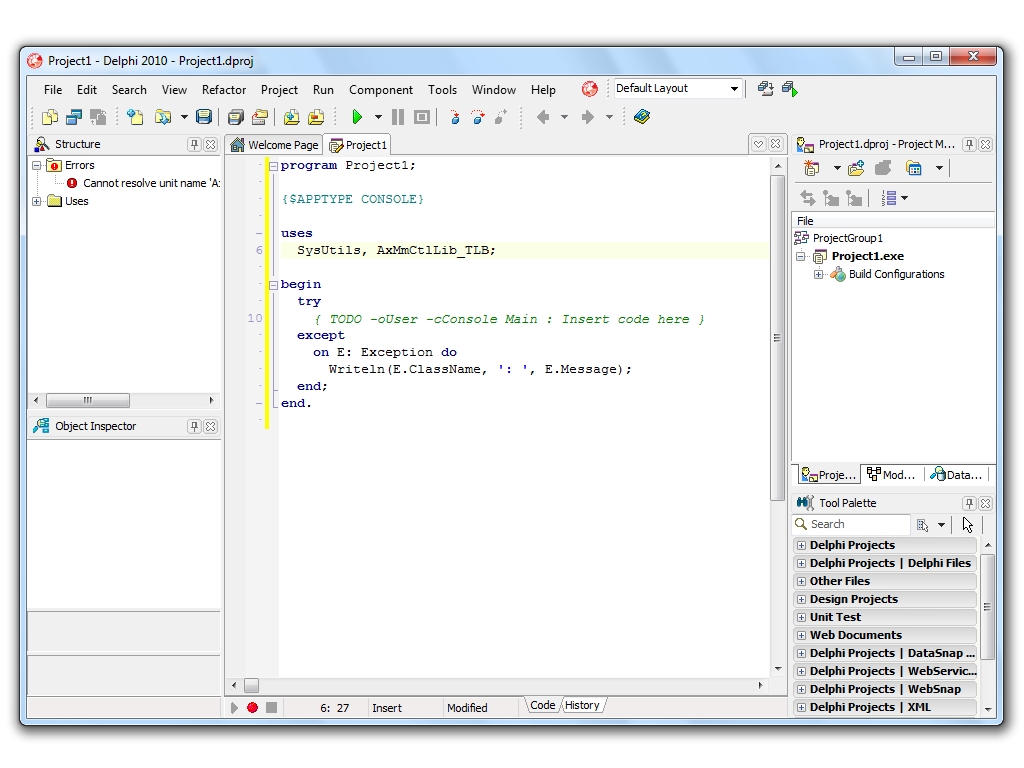Delphi SNMP Trap Receiver Sample Source Code
Network Component provides an easy-to-use development interface to a variety of IP protocols. By using Network Component, you can very easily create or enhance applications with network features.
Network Component features the following: DNS, FTP, HTTP, HTTPs, ICMP Ping, IP-to-Country, MSN, NTP, RSH, SCP, SFTP, SNMP v1/v2c (Get, GetNext, Set), SNMP Traps, SNMP MIB, SSH, TCP, Telnet, TFTP, UDP, Telnet, Wake-On-LAN and more.
Network Component can be well integrated into any development platform that supports ActiveX objects.
Network Component is compliant with SNMP v1 and SNMP v2c. Several SNMP data types are supported, including:
- String types (also called "octet strings");
- Integer types (16bit, 32bit, 64bit and unsigned integers);
- IP Address types;
- Timetick types;
- Counter types (32bit and 64bit counters);
- OID types (also called "Object ID's");
- Other, less frequently used datatypes.
Network Component SNMP traps features:
- SNMP v1 and SNMP v2c support;
- Support for aplphanumeric OID's (object identifier) and numeric OID's;
- Multi-threading architecture: send SNMP traps simultaneously from one process using multiple threads;
- Support for ports other than the default 161 and 162 ports;
- Support for enterprise specific traps;
- Support for SNMP v1 generic traps;
- Send multiple variables in a single SNMP TRAP message.
Step 1: Download and install the Network Component
Download Network Component from the ActiveXperts Download Site and start the installation. The installation guides you through the installation process.
Step 2: Create a new Delphi Project
Launch Borland Delphi from the Start menu. Choose 'New' from the 'File' menu and select your preferred kind of application, for instance: 'VCL Forms Application - Delphi for Win32'. A new Form is displayed in the workspace.
Step 3: Refer to the Network Component Library and create the objects
Now that a new project has been created, you must add a reference to Network Component in the project to be able to use the Network Component object. To do so, choose 'Import Component...' from the 'Component' menu. The Import Components' dialog appears. Select 'Import a Type Library':
In the 'Registered Type Libraries' page, select 'Network Component 4.4 Type Library' and click 'Next':
In the 'Components' page, leave all fields default and click 'Next':
In the 'Install' page, select 'Create Unit' and click 'Next':
The interface code is generated now and is shown in the AxNetwork_TLB tab of the project.
Step 4: Declare and create the object
From the Project Manager, open Unit1.bas and add the AxNetwork_TLB to the 'Uses' statement to refer to the Network Component library:
In the 'private' or 'public' section, declare the following objects:
Appendix: Full source code
{******************************************************************************}
{ }
{ ActiveXperts }
{ }
{ Active Socket: Delphi_Console_SNMPtrapDemo }
{ }
{ }
{ }
{ }
{ }
{ }
{******************************************************************************}
program SNMPtrapDemo;
{$APPTYPE CONSOLE}
uses
SysUtils, ActiveX,
AxNetwork_TLB in '../../Imports/AxNetwork_TLB.pas';
{==============================================================================}
{= R e a d I n p u t ========================================================}
{==============================================================================}
function ReadInput(strTitle:string;strdefault:string):string;
var
strInput:string;
begin
strInput := '';
WriteLn(strTitle);
Write(' > ');
ReadLn(strInput);
if( strInput = '' )then strInput := strDefault;
ReadInput:= strInput;
end;
{==============================================================================}
{==============================================================================}
{= T H E P R O G R A M I T S E L F ========================================}
{==============================================================================}
{==============================================================================}
var
objSnmpTrapManager:SnmpTrapManager ;
objSnmpTrap: SnmpTrap ;
objConstants:NwConstants;
objSnmpObject: SnmpObject;
strMibFile,
strHostName,
strCommunity:string;
vt:OleVariant;
begin
CoInitialize(nil);
objSnmpTrapManager := COSnmpTrapManager.Create();
objSnmpTrap := COSnmpTrap.Create();
objConstants := CONwConstants.Create();
objSnmpObject := COSnmpObject.Create();
strMibFile := '';
strHostName := '';
strCommunity := '';
// A license key is required to unlock this component after the trial period
// has expired. Assign the LicenseKey property every time a new instance of
// this component is created (see code below). Alternatively, the LicenseKey
// property can be set automatically. This requires the license key to be
// stored in the registry. For details, see manual, chapter
// "Product Activation".
{
objSnmpTrapManager.LicenseKey = 'XXXXX-XXXXX-XXXXX';
}
Writeln('ActiveXperts Network Component ' + objSnmpTrapManager.Version + sLineBreak +
'Build: ' + objSnmpTrapManager.Build + sLineBreak +
'Module: ' + objSnmpTrapManager.Module + sLineBreak +
'License Status: ' + objSnmpTrapManager.LicenseStatus + sLineBreak +
'License Key: ' + objSnmpTrapManager.LicenseKey + sLineBreak);
strHostName := ReadInput('Enter SNMP (remote) host (leave blank to use "localhost"):', 'localhost' );
strCommunity := ReadInput('Enter community (leave blank to use "public"):', 'public' );
strMibFile := ReadInput('Enter MIB file (optional):', '' );
WriteLn('Agent: ' + strHostName );
WriteLn('Community: ' + strCommunity );
WriteLn('MIB file: ' + strMibFile );
// To enable logging, assign a valid log file to the LogFile property
// objSnmpTrapManager.LogFile := 'C:\SnmpManagerTrapDemo.log';
// Set protocol version
objSnmpTrapManager.ProtocolVersion := objConstants.nwSNMP_VERSION_V2C;
// SNMP Initialize
objSnmpTrapManager.Initialize();
WriteLn('Initialize, result: ' + IntToStr(objSnmpTrapManager.LastError) + ' (' + objSnmpTrapManager.GetErrorDescription(objSnmpTrapManager.LastError) + ')' );
if( objSnmpTrapManager.LastError <> 0 )then
begin
sleep(5000);
// return;
end;
if( strMibFile <> '' )then objSnmpTrapManager.LoadMibFile( strMibFile );
// Set trap properties
objSnmpTrap.Clear();
objSnmpTrap.Host := strHostName;
objSnmpTrap.Community := strCommunity;
objSnmpTrap.Port := 162;
// Add first variable to trap
objSnmpObject.Clear();
objSnmpObject.OID := '.1.3.6.1.2.1.1.5.0';
objSnmpObject.Type_ := objConstants.nwSNMP_TYPE_IPADDRESS;
objSnmpObject.Value := '10.0.0.1';
vt:= objSnmpObject;
objSnmpTrap.AddObject( vt);
// Add second variable to trap
objSnmpObject.Clear();
objSnmpObject.OID := '.1.3.6.1.2.1.1.5.1';
objSnmpObject.Type_ := objConstants.nwSNMP_TYPE_OCTETSTRING;
objSnmpObject.Value := 'One two three';
vt := objSnmpObject;
objSnmpTrap.AddObject ( vt );
// Send the trap. If you want to use another port than default SNMP trap port 162, set it as optional 2nd parameter
vt:= objSnmpTrap;
objSnmpTrapManager.Send(vt);
WriteLn('Send, result: ' + IntToStr(objSnmpTrapManager.LastError) + ' (' + objSnmpTrapManager.GetErrorDescription(objSnmpTrapManager.LastError) + ')' );
// Shutdown
objSnmpTrapManager.Shutdown();
writeLn('Shutdown, result: ' + IntToStr(objSnmpTrapManager.LastError) + ' (' + objSnmpTrapManager.GetErrorDescription(objSnmpTrapManager.LastError) + ')' );
WriteLn('Ready.');
sleep(3000);
writeln('Done. Press to close this window');readln;
end.
You can download the complete samples here. There are many other working Network Component scripts on our site and shipped with the product.

